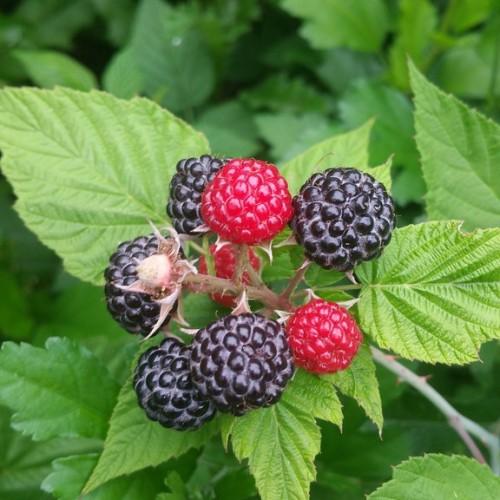
Black Raspberry
Rubus occidentalis
Cycle:
Perennial
Watering:
Average
Hardiness Zone:
Sun:
Full sun Partial sun
Soil:
Sandy,Loamy,Rocky
Fruits:
Fruits Ready In
Edible:
Yes
Leaf:
Yes
Growth Rate:
High
Drought Tolerant:
Yes
Salt Tolerant:
Yes
Care Level:
Medium
watering
Black Raspberry plants should be watered deeply and often in the spring and summer when they are actively growing. In the fall, watering should be reduced until it can be stopped for the winter season when the plants enter dormancy. During its growing season, Black Raspberry plants should be watered every 7–10 days. Water approximately 1–2 inches at a time and ensure the ground is thoroughly soaked with each watering. The soil should remain moist but not soggy. During times of extended dry spells, increase the amount and frequency of watering to prevent the plant from wilting.
sunlight
Black Raspberry (Rubus occidentalis) prefers full sun, but it can tolerate partial shade. It needs 6–8 hours of direct sunlight each day for optimal growth. When planted in full sun, it will produce more fruit but will require more water and fertilization than plants in partial shade. The plant should be located in an area that gets the most early morning sun as this helps yield the sweetest berries.
pruning
Black Raspberries should be pruned during the dormant season, which is usually late winter or early spring. Pruning should be done to remove old and diseased canes, as well as to promote new growth and increase yields. When pruning Black Raspberries,it is important to remove all the dead, damaged, and weak canes that sprouted from the previous season. Also, remove diseased or insect-infested canes. Prune the canes back to approximately 2 to 3 feet in height, at the ground level. This will ensure that the new canes that grow will be healthy and strong. In addition to pruning, it's important to maintain a balance between renewal and fruiting canes. For best results, prune at least 1/3 of the older canes each year, and do not remove more than 1/2 of the fruiting canes at 1 time. This will help promote growth and yields of new, productive canes.
Season
FAQ
Should I Mulch Around Raspberry Trees?
Yes, absolutely! Mulching around raspberry trees is beneficial as it helps to prevent weeds, retain moisture and capture important nutrients from leaching away. You should apply a layer of organic mulch such as straw, grass clippings, compost, sawdust, or bark across the base of the plants in late winter for best results. This will also help to insulate the roots and prevent the spread of disease. Make sure the mulch isn't too thick; a 3-inch layer should be enough.
Do Raspberry Trees Attract Beneficial Pollinators?
Yes, raspberry trees do attract beneficial pollinators. These pollinators are primarily bees and other small insects that feed on the nectar and pollen of raspberry flowers. These pollinators are important for the reproduction of raspberries, as they help transfer pollen from male to female flowers to enable fruit production. Not only do the pollinators benefit raspberry trees by ensuring fruit production, but they also provide a benefit to the environment as a whole by aiding the pollination process for other plants and flowers.
